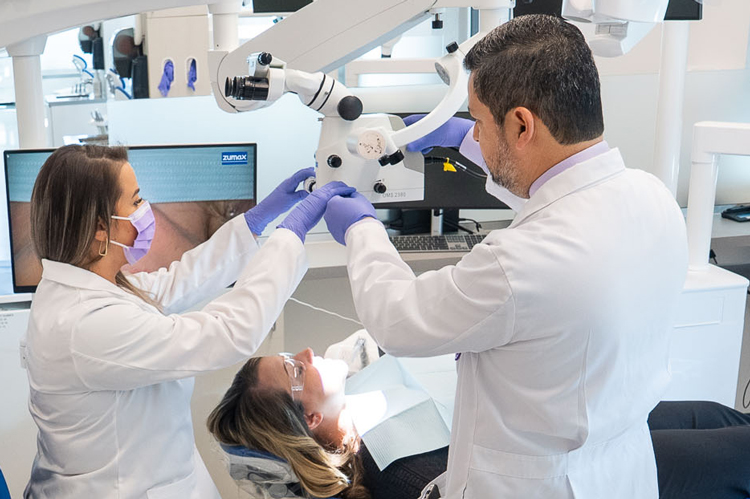Treatment for Today, Innovation for Tomorrow, and Education for a Generation
Nova Southeastern University plays a critical role advancing health locally and globally with a unique trifecta we call NSU Health. The convergence of education, patient care, and groundbreaking research creates a cycle of excellence. Knowledge is passed on to a new generation of healthcare leaders, patient care services the community and provides opportunities for students to learn and improve outcomes, and research delivers breakthrough insights, treatments, and innovations to transform patient care.
Patient Care, Education, and Research Spark a Cycle of Excellence



The Impact of NSU in Healthcare
NSU Health Leadership
NSU educates students, delivers care, and conducts research, a powerful combination that expands our ability to keep people healthy, prevent, and treat diseases, and increase the number of well-trained health care professionals needed locally and beyond to meet demand.
Chad A. Perlyn, M.D., Ph.D., MBA | Executive Vice President and Chief Medical Officer | Executive Director of NSU Health | Dean of Dr. Kiran C. Patel College of Allopathic Medicine
Featured NSU Health Clinics
We offer a full spectrum of affordable dental, surgical, and orthodontic services.
Clearwater Dentistry OfficeAn ALS Association Certified Treatment Center of Excellence
ALS CenterHigh quality hearing care for all ages
Hearing CareCare for vision correction, high quality diagnosis, and management of eye conditions.
Eye CareComprehensive free-of-charge care for veterans and their families.
Veterans Care
Educational Healthcare Excellence
Recognized globally as a leader in high-quality medical and healthcare education, NSU graduates thousands of healthcare professionals annually. By helping to stem workforce shortages, NSU plays a significant role in providing communities with access to quality care.
Providing Passionate Care to Patients with Neurological Disorders
David and Cathy Husman Institute

The NSU Health Neuroscience Institute, led by Medical Director Dr. Eduardo Locatelli, treats patients with neurological conditions such as epilepsy, seizures, muscle weakness, and Alzheimer’s Disease as well as Amyotrophic Lateral Sclerosis (ALS).
Accelerating the Discovery of Life-Saving Treatments
Recognition for Highest Level of Research Activity
Nova Southeastern University (NSU), Florida’s largest private research university, has reached a level of standing few of the nearly 4,000 higher education institutions across the United States have achieved: designation as an R1 research university by the Carnegie Classification of Institutions of Higher Education.
32 Active Clinical Trials in Process
Dozens of clinical trials run by NSU are available for patients to access the latest novel therapies and approaches to treatment.
- Cardiovascular
- Dentistry
- Dermatology
- Digestive Systems
- Endocrinology
- Infectious Disease
- Neurosciences
- Oncology
- Respiratory






